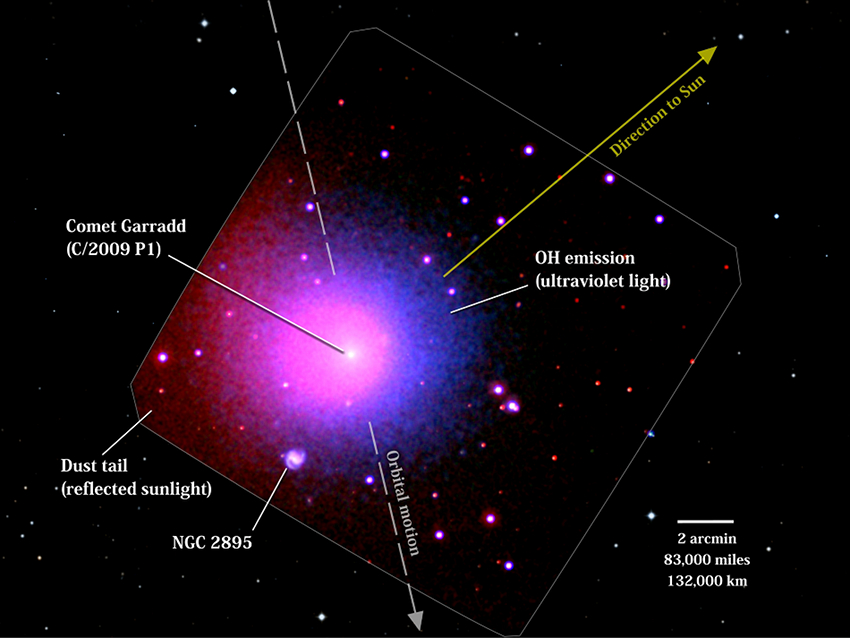
 Credit: NASA/Swift/D. Bodewits (UMD) and S. Immler (GSFC) and DSS/STScI/AURA
Credit: NASA/Swift/D. Bodewits (UMD) and S. Immler (GSFC) and DSS/STScI/AURA
Swift Snows of Yesteryear Sublime
The deep freeze of interstellar space is excellent at preserving material for billions of years in a pristine state. Samples of the material out of which the Sun and solar system formed are now locked away as small icy bodies which swarm in the Oort cloud, a region of space which surrounds the solar system and extends from about one light month to nearly 1 light year from earth. Every once in a while, one of these mountain-sized snowballs gets jettisoned due to a random gravitational encounter. If we're lucky (or unlucky) one may come wandering past the Sun, illuminating the night sky as a spectacular hairy star, or comet. A comet's tale speaks of the sublimation of ice to cold steam at a point about 3 times earth's separation from the Sun, which astronomers whimsically call the snow line. When this happens the comet grows dramatically brighter. A recent interloper named Comet Garradd was seen to spout at much larger distances, suggesting an anomalously large ejection of dust. This indicates cometary activity far beyond the snow line, and may suggest that this particular comet has a much larger fraction of more volatile chemicals (like carbon monoxide or carbon dioxide) for some peculiar reason astronomers are trying to understand. Ultraviolet images obtained by UV space telescopes, like the one of Comet Garradd above, obtained by the UVOT on the Swift Gamma-ray burst hunter, provide key information about the activation of comets by sunlight. Astronomers will be able to study the comet for about one year, when it moves to 5 times the earth-sun distance and begins to refreeze on its journey back to the icy void of the Oort cloud.
Published: April 30, 2012
<
HEA Dictionary ● Archive
● Search HEAPOW
● Other Languages
● HEAPOW on Facebook
● Download all Images
● Education ● HEAD
>

Each week the HEASARC
brings you new, exciting and beautiful images from X-ray and Gamma ray
astronomy. Check back each week and be sure to check out the HEAPOW archive!
Page Author: Dr. Michael F. Corcoran
Last modified Tuesday, 27-Feb-2024 10:08:17 EST


